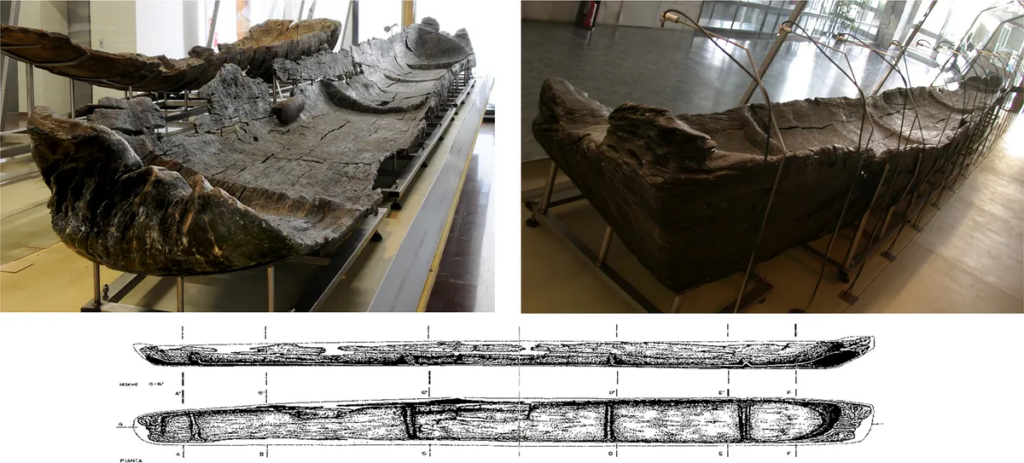Mediterranean seafarers of the Neolithic era traveled in complex vessels that already contained many of the seafaring solutions that can be seen on modern boats. The quality and complexity of these prehistoric vessels indicate that several significant advances in sailing were made at the end of the Stone Age, paving the way for the spread of the most important civilizations of the ancient world.
It is well known that maritime trade links existed in the Mediterranean during the Neolithic period, although until then it was unclear how adept these early seafarers were at navigating the waves. To overcome this uncertainty, the authors of the new study analyzed five excavated canoes found at a 7000-year-old settlement that now lies at the bottom of an Italian lake.
Known as La Marmotta, the site is submerged under 8 meters (26 ft) of water and another three meters (10 ft) of sedimentary rock, about 300 meters (985 ft) from the modern shoreline of Lake Bracciano, near Rome. Researchers believe the settlement was settled between 5700 and 5150 BC and describe it as the earliest Neolithic lakeside village in the central Mediterranean.
Of the five canoes found at the site, the largest was made from a huge oak trunk and was 10,43 meters (34 ft) long. According to the authors, four "transverse reinforcements" on the base of the vessel "would increase the strength of the hull and protect it, as well as improve its handling."
Even more impressive is that the researchers found three T-shaped wooden objects on the starboard side of the vessel, each of which had several holes. "The characteristics and location of these objects suggest that they could have been used to secure ropes tied to a possible sail, or to connect to other marine elements such as a stabilizer or even another boat to create a double hull in the form of catamaran", they write.
"These strategies would provide greater safety and stability, as well as greater capacity for transporting people, animals and cargo."

The second canoe was made from a hollowed-out alder trunk and contained a "mushroom" piece of wood with one hole. Noting the similarity between this object and "modern bollards that can be seen in our ports", the authors "suggest that its function may have been precisely to anchor the canoe when the water level in the lake rose".
Of the remaining three boats, one was carved from alder, one from poplar, and one from beech. According to the researchers, the variety of types of wood from which the boats were made shows that the original builders had a good understanding of the different properties of each material.
For example, oak may have been chosen for its strength, while alder was probably used because it is light and resistant to cracking.
"Direct dating of the Neolithic canoes from La Marmotta shows that they are the oldest in the Mediterranean, offering invaluable information about Neolithic navigation," the authors said in a statement. "This study reveals the astonishing technological sophistication of early agricultural and pastoral communities, highlighting their skills in woodworking and complex vessel construction."
Given the size of the canoes, researchers suspect they were probably intended for use far beyond Lake Bracciano. Therefore, they suggest that the boats could have gone down the Arrone River, which connects the lake to the Mediterranean Sea, before continuing their journey to foreign lands.
Evidence of these overseas journeys can be found in the many exotic artefacts found at La Marmotta, including Greek and Baltic pottery and obsidian tools from the islands of Lipari and Palmarola. The seaworthiness of the vessels was also demonstrated by a group of experimental archaeologists who built a replica of one of the canoes back in 1998 and sailed it over 800 kilometers (500 miles) from Italy to Portugal.


 639
639












